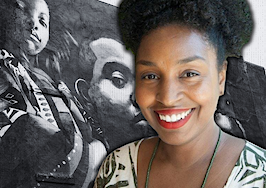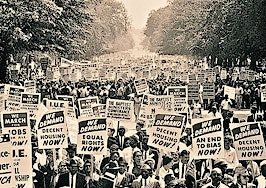At Inman Connect Las Vegas, July 30-Aug. 1, 2024, the noise and misinformation will be banished, all your big questions will be answered, and new business opportunities will be revealed. Join us.
Black homeowners have long struggled to experience the same gains as their white counterparts during the selling process. They grapple with slower home value growth, especially if they live in a majority-minority ZIP code. And when it’s time to sell, they disproportionately receive low-ball appraisals and buyer offers — two more roadblocks in Black Americans’ quest to build long-term wealth.
However, according to a University of Washington research team, Black homeowners have been able to experience better seller outcomes in the iBuyer sphere than in the open market.
What gives?
The Information School team zeroed in on Mecklenburg County, North Carolina, which has 1.1 million residents across six cities: Charlotte, Huntersville, Matthews, Cornelius, Pineville, and Mint Hill. Charlotte accounts for almost 900,000 of Mecklenburg’s 1.1 million residents and has a Black population of 35 percent. IBuyers achieved solid results in Charlotte, reaching 8 percent market share in 2021.
The team accessed 50,000 publicly available property transfer records from 2018 to 2023 for Mecklenburg County and then cross-referenced those records with North Carolina voter rolls, which provide racial data. From there, the team controlled for 50 factors, including home size and neighborhood crime rate, and found the offer gap between Black and white homeowners shrunk from $36,051 on the open market to $4,436 with iBuyers.
The gap shrunk due to the fact that iBuyers paid Black homeowners $4,376 more and white homeowners $27,239 less, on average.
“There’s very little reason for us to believe that there’s some purposeful intervention going on here,” senior author and associate professor Nic Weber said in a prepared statement. “iBuyers are paying Black homeowners a little bit more, but not significantly more. Rather, iBuyers don’t seem to be willing to pay white homeowners what they might be able to earn if they sold through a traditional broker.”
Although Black homeowners are getting better offers through iBuyers, UW’s team said iBuyers are contributing to trends that hurt Black homeowners and homebuyers in the long term. Institutional buyers have an outsized presence in the iBuyer space, with institutional ownership for white-owned homes increasing from 9 percent on the open market to 17 percent in the iBuyer market and 33 percent to 36 percent for Black-owned homes.
Institutional buyer activity is connected to higher housing costs and eviction rates, two factors that disproportionately impact the Black community.
“These real estate investment trusts tend to look for cheap homes that they can buy and convert to rentals so that they can profit over decades,” Weber said. “So this change in conversion rate from people to institutions is troubling because in the U.S., one of the substantial ways that people gain wealth and transfer it between generations is through homeownership.”
Added doctoral student Isaac Slaughter, “iBuyers are offering a service. They’re making the home sale process faster and simpler. While our analysis in Mecklenburg suggests iBuyers are extending some disadvantages that Black home sellers tend to face to white home sellers as well, we don’t know that people are experiencing these sales as generally harmful or whether they’re aware of the tradeoffs that are involved.”
The UW team plans to extend their research to Maricopa County, Arizona, and Orange County, Florida.













